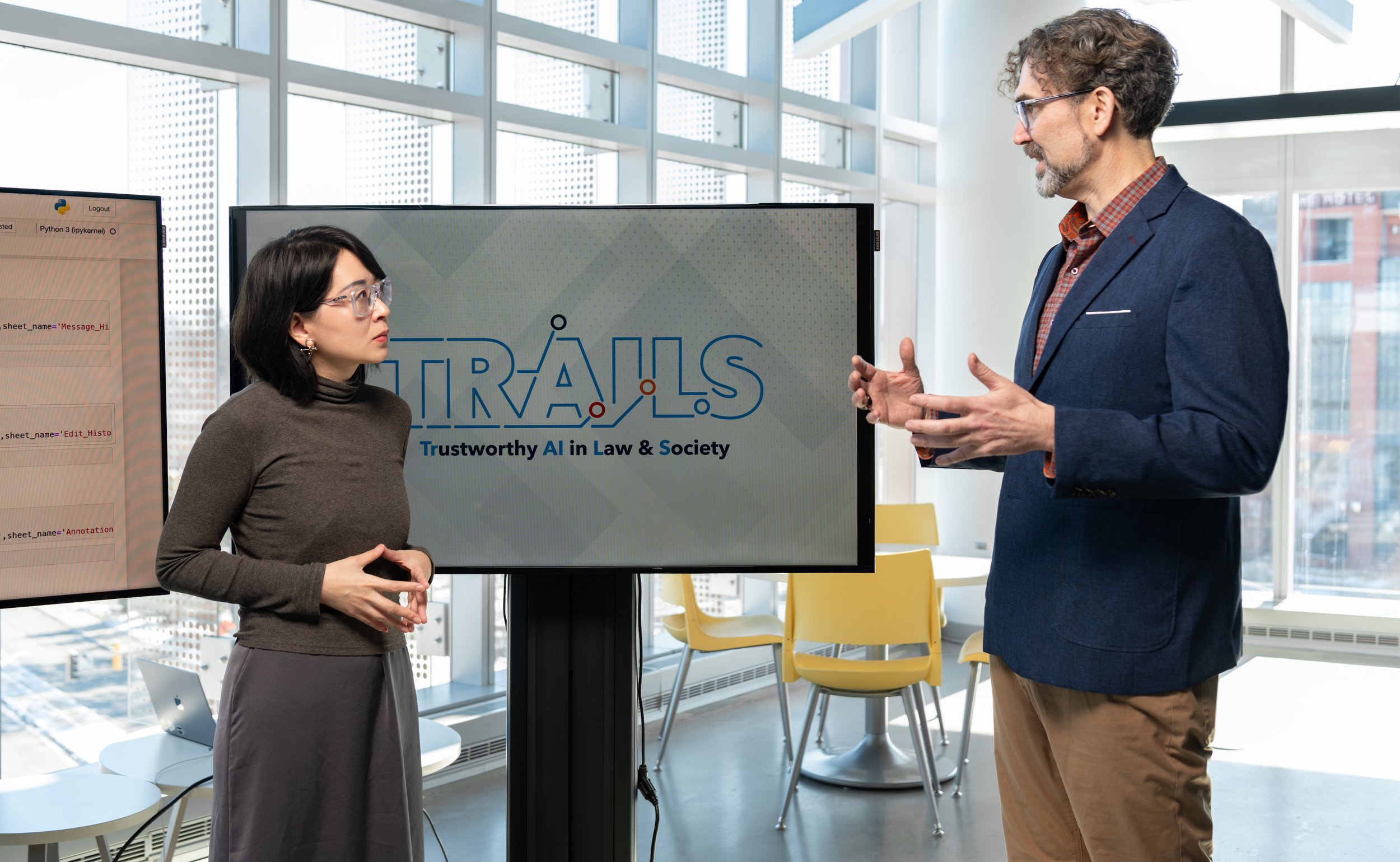
Soheil Feizi
Associate Professor of Computer Science
University of Maryland
Area of Expertise: AI Reliability and Robustness
Soheil Feizi is an associate professor of computer science with an appointment in the University of Maryland Institute for Advanced Computer Studies, where he is also a core member of the University of Maryland Center for Machine Learning. His research is centered around developing reliable and trustworthy AI with a focus on understanding its robustness, generalizability and interpretability.
-
Sadasivan, V., Kumar, A., Balasubramanian, S., Wang, W., & Feizi, S. (2023). Can AI-Generated Text be Reliably Detected? ArXiv, arXiv:2303.11156.
Abstract: In this paper, both empirically and theoretically, we show that several AI-text detectors are not reliable in practical scenarios. Empirically, we show that paraphrasing attacks, where a light paraphraser is applied on top of a large language model (LLM), can break a whole range of detectors, including ones using watermarking schemes as well as neural network-based detectors and zero-shot classifiers. Our experiments demonstrate that retrieval-based detectors, designed to evade paraphrasing attacks, are still vulnerable to recursive paraphrasing. We then provide a theoretical impossibility result indicating that as language models become more sophisticated and better at emulating human text, the performance of even the best-possible detector decreases. For a sufficiently advanced language model seeking to imitate human text, even the best-possible detector may only perform marginally better than a random classifier. Our result is general enough to capture specific scenarios such as particular writing styles, clever prompt design, or text paraphrasing. We also extend the impossibility result to include the case where pseudorandom number generators are used for AI-text generation instead of true randomness. We show that the same result holds with a negligible correction term for all polynomial-time computable detectors. Finally, we show that even LLMs protected by watermarking schemes can be vulnerable against spoofing attacks where adversarial humans can infer hidden LLM text signatures and add them to human-generated text to be detected as text generated by the LLMs, potentially causing reputational damage to their developers. We believe these results can open an honest conversation in the community regarding the ethical and reliable use of AI-generated text.
-
Kalibhat, N., Bhardwaj, S., Bruss, B., Firooz, H., Sanjabi, M., & Feizi, S. (2023). Identifying Interpretable Subspaces in Image Representations. Proceedings of the 40th International Conference on Machine Learning, PMLR 202, 2023.
Abstract: We propose Automatic Feature Explanation using Contrasting Concepts (FALCON), an interpretability framework to explain features of image representations. For a target feature, FALCON captions its highly activating cropped images using a large captioning dataset (like LAION400m) and a pre-trained vision-language model like CLIP. Each word among the captions is scored and ranked leading to a small number of shared, human-understandable concepts that closely describe the target feature. FALCON also applies contrastive interpretation using lowly activating (counterfactual) images, to eliminate spurious concepts. Although many existing approaches interpret features independently, we observe in state-of-the-art self-supervised and supervised models, that less than 20% of the representation space can be explained by individual features. We show that features in larger spaces become more interpretable when studied in groups and can be explained with high-order scoring concepts through FALCON. We discuss how extracted concepts can be used to explain and debug failures in downstream tasks. Finally, we present a technique to transfer concepts from one (explainable) representation space to another unseen representation space by learning a simple linear transformation.
-
Singla, S., & Feizi, S. (2022). Salient ImageNet: How to Discover Spurious Features in Deep Learning?. arXiv preprint arXiv:2110.04301).
Abstract: Deep neural networks can be unreliable in the real world especially when they heavily use {\it spurious} features for their predictions. Focusing on image classifications, we define {\it core features} as the set of visual features that are always a part of the object definition while {\it spurious features} are the ones that are likely to {\it co-occur} with the object but not a part of it (e.g., attribute "fingers" for class "band aid"). Traditional methods for discovering spurious features either require extensive human annotations (thus, not scalable), or are useful on specific models. In this work, we introduce a {\it general} framework to discover a subset of spurious and core visual features used in inferences of a general model and localize them on a large number of images with minimal human supervision. Our methodology is based on this key idea: to identify spurious or core \textit{visual features} used in model predictions, we identify spurious or core \textit{neural features} (penultimate layer neurons of a robust model) via limited human supervision (e.g., using top 5 activating images per feature). We then show that these neural feature annotations {\it generalize} extremely well to many more images {\it without} any human supervision. We use the activation maps for these neural features as the soft masks to highlight spurious or core visual features. Using this methodology, we introduce the {\it Salient Imagenet} dataset containing core and spurious masks for a large set of samples from Imagenet. Using this dataset, we show that several popular Imagenet models rely heavily on various spurious features in their predictions, indicating the standard accuracy alone is not sufficient to fully assess model performance. Code and dataset for reproducing all experiments in the paper is available here.
-
Laidlaw, C., Singla, S., & Feizi, S. (2021). Perceptual Adversarial Robustness: Defense Against Unseen Threat Models. International Conference on Learning Representations, ICLR.
Abstract: A key challenge in adversarial robustness is the lack of a precise mathematical characterization of human perception, used in the definition of adversarial attacks that are imperceptible to human eyes. Most current attacks and defenses try to avoid this issue by considering restrictive adversarial threat models such as those bounded by L2 or L∞ distance, spatial perturbations, etc. However, models that are robust against any of these restrictive threat models are still fragile against other threat models, i.e. they have poor generalization to unforeseen attacks. Moreover, even if a model is robust against the union of several restrictive threat models, it is still susceptible to other imperceptible adversarial examples that are not contained in any of the constituent threat models. To resolve these issues, we propose adversarial training against the set of all imperceptible adversarial examples. Since this set is intractable to compute without a human in the loop, we approximate it using deep neural networks. We call this threat model the neural perceptual threat model (NPTM); it includes adversarial examples with a bounded neural perceptual distance (a neural network-based approximation of the true perceptual distance) to natural images. Through an extensive perceptual study, we show that the neural perceptual distance correlates well with human judgements of perceptibility of adversarial examples, validating our threat model.
Under the NPTM, we develop novel perceptual adversarial attacks and defenses. Because the NPTM is very broad, we find that Perceptual Adversarial Training (PAT) against a perceptual attack gives robustness against many other types of adversarial attacks. We test PAT on CIFAR-10 and ImageNet-100 against five diverse adversarial attacks: L2, L∞, spatial, recoloring, and JPEG. We find that PAT achieves state-of-the-art robustness against the union of these five attacks—more than doubling the accuracy over the next best model—without training against any of them. That is, PAT generalizes well to unforeseen perturbation types. This is vital in sensitive applications where a particular threat model cannot be assumed, and to the best of our knowledge, PAT is the first adversarial training defense with this property.
-
Levine, A., & Feizi, S. (2021). Improved, Deterministic Smoothing for L_1 Certified Robustness. arXiv preprint arXiv:2103.10834.
Abstract: Randomized smoothing is a general technique for computing sample-dependent robustness guarantees against adversarial attacks for deep classifiers. Prior works on randomized smoothing against L_1 adversarial attacks use additive smoothing noise and provide probabilistic robustness guarantees. In this work, we propose a non-additive and deterministic smoothing method, Deterministic Smoothing with Splitting Noise (DSSN). To develop DSSN, we first develop SSN, a randomized method which involves generating each noisy smoothing sample by first randomly splitting the input space and then returning a representation of the center of the subdivision occupied by the input sample. In contrast to uniform additive smoothing, the SSN certification does not require the random noise components used to be independent. Thus, smoothing can be done effectively in just one dimension and can therefore be efficiently derandomized for quantized data (e.g., images). To the best of our knowledge, this is the first work to provide deterministic “randomized smoothing” for a norm-based adversarial threat model while allowing for an arbitrary classifier (i.e., a deep model) to be used as a base classifier and without requiring an exponential number of smoothing samples. On CIFAR-10 and ImageNet datasets, we provide substantially larger L_1 robustness certificates compared to prior works, establishing a new state-of the-art. The determinism of our method also leads to significantly faster certificate computation. Code is available here.











